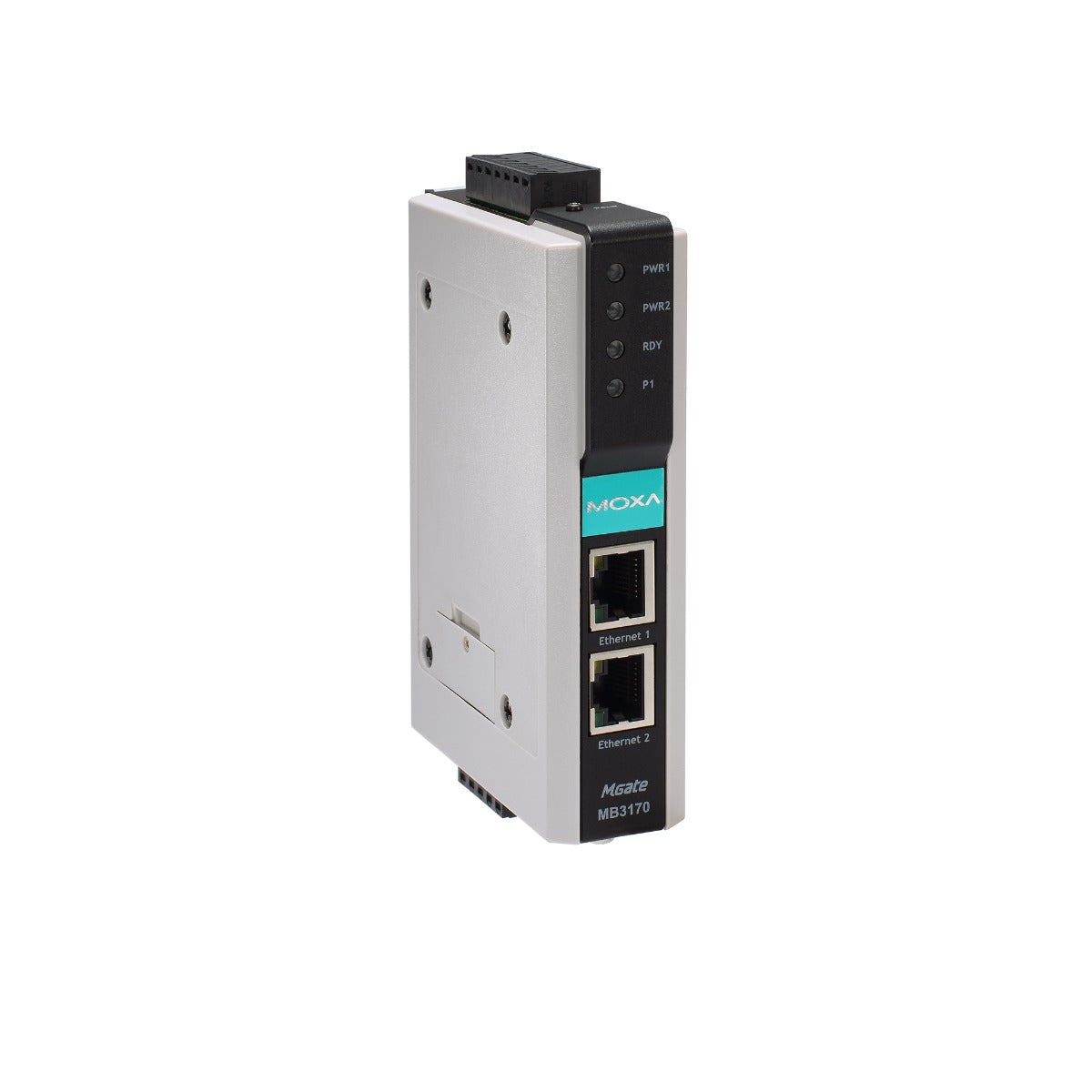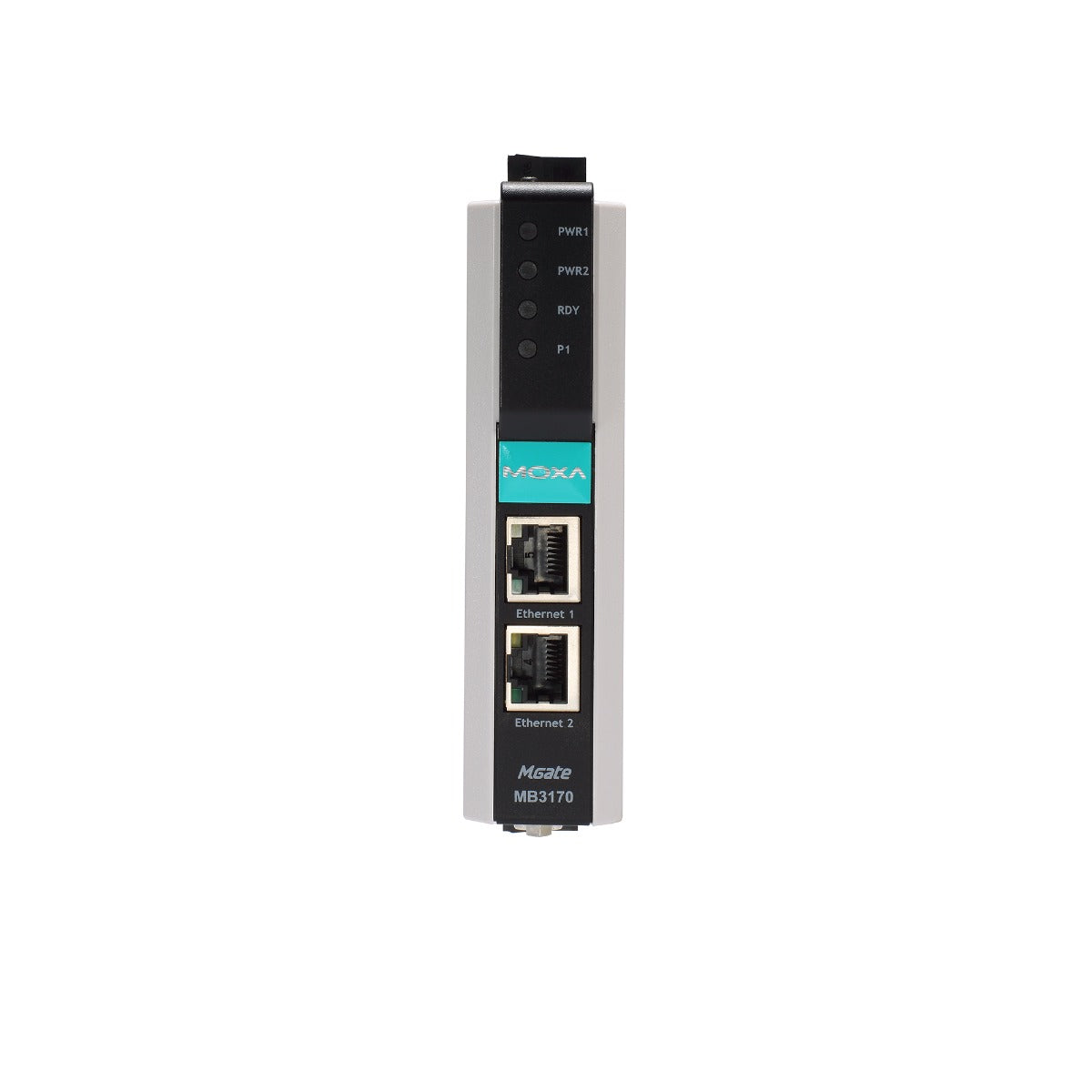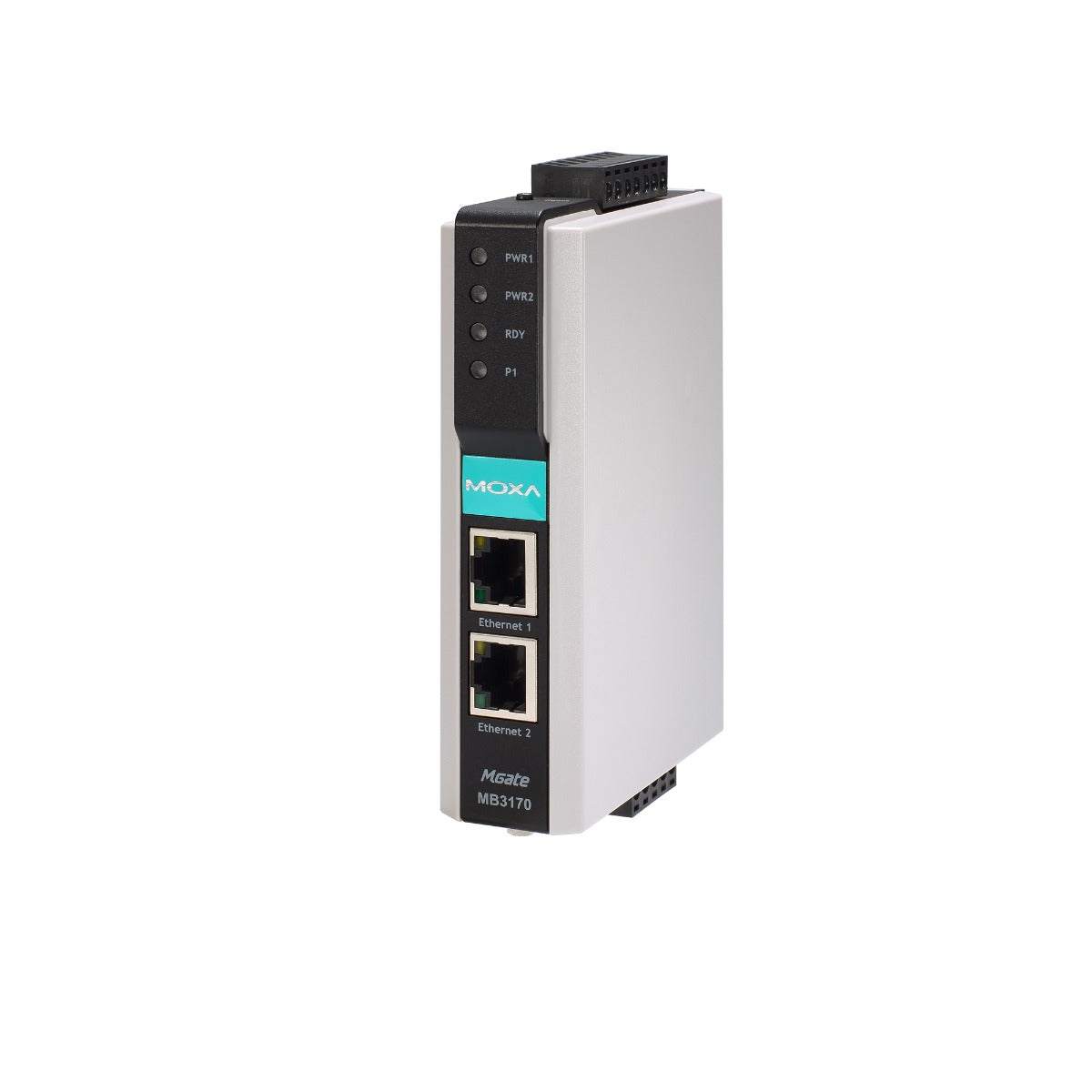- Supports Auto Device Routing for easy configuration
- Supports route by TCP port or IP address for flexible deployment
- Connects up to 32 Modbus TCP servers
- Connects up to 31 Modbus RTU/ASCII slaves
- Accessed by up to 32 Modbus TCP clients (retains 32 Modbus requests for each Master)
- Supports Modbus serial master to Modbus serial slave communications
- Built-in Ethernet cascading for easy wiring
- 10/100BaseTX (RJ45) or 100BaseFX (single mode or multi-mode with SC/ST connector)
- Emergency request tunnels ensure QoS control
- Embedded Modbus traffic monitoring for easy troubleshooting
- Serial port with 2 kV isolation protection (for “-I” models)
- Wide temperature models -40 to 75C available
- Supports redundant dual DC power inputs and 1 relay output
Moxa MGate MB3170 advanced Modbus gateways provide both serial-to-Ethernet communication and serial (master) to serial (slave) communications. In addition, the Mgate MB3170 gateways support simultaneously connecting serial and Ethernet masters with serial Modbus devices. MGate MB3170 can be accessed by up to 32 TCP master/clients or connect to up to 32 TCP slave/servers. Routing through the serial ports can be controlled by IP address, TCP port number, or ID mapping. A featured priority control function allows urgent commands to obtain an immediate response. All models are rugged, DIN-rail mountable, and offer optional built-in optical isolation for serial signals.
Optical Fiber for Ethernet Communication
MGate MB3170 Series has 100BaseFX fiber models that support transmission distances up to 4 km for multi-mode models, and up to 40 km for single-mode models. Optical fiber is well-suited for industrial applications because it is immune to electromagnetic noise and interference. For environments that experience high ground loop voltages, fiber provides the best isolation protection, and because there is no danger of sparking, optical fiber is safer than copper wire to use in hazardous environments.
Auto-Device Routing for Easy Configuration
Moxa’s Auto-Device Routing function helps eliminate many of the problems and inconveniences encountered by engineers who need to configure large numbers of Modbus devices. A single mouse click is all that’s required to set up a slave ID routing table and configure Modbus gateways to automatically detect Modbus requests from a supervisory control and data acquisition (SCADA) system. By removing the need to manually create the slave ID routing table, the Auto-Device Routing function saves engineers significant time and cost.
Priority Control for Urgent Commands
As Modbus networks increase in size and complexity, the lag time between commands and responses becomes a major concern. Advanced models of the MB3000 Series provide a priority control function for urgent commands, allowing users to force certain commands to get an immediate response. Depending on your system’s requirements, different methods are available to define which commands receive priority.
| Model | Ethernet | Serial Isolation | Operating Temperature |
| MGate MB3170 | 2 x RJ45 | - | 0 to 60°C |
| MGate MB3170-T | 2 x RJ45 | - | -40 to 75°C |
| MGate MB3170I | 2 x RJ45 | 2 kV | 0 to 60°C |
| MGate MB3170I-T | 2 x RJ45 | 2 kV | -40 to 75°C |
| MGate MB3170-M-SC | 1 x Multi-Mode SC | - | 0 to 60°C |
| MGate MB3170-M-ST | 1 x Multi-Mode ST | - | 0 to 60°C |
| MGate MB3170-S-SC | 1 x Single-Mode SC | - | 0 to 60°C |
| MGate MB3170I-M-SC | 1 x Multi-Mode SC | 2 kV | 0 to 60°C |
| MGate MB3170I-S-SC | 1 x Single-Mode SC | 2 kV | 0 to 60°C |
| MGate MB3170-M-SC-T | 1 x Multi-Mode SC | - | -40 to 75°C |
| MGate MB3170-M-ST-T | 1 x Multi-Mode ST | - | -40 to 75°C |
| MGate MB3170-S-SC-T | 1 x Single-Mode SC | - | -40 to 75°C |
| MGate MB3170I-M-SC-T | 1 x Multi-Mode ST | 2 kV | -40 to 75°C |
| MGate MB3170I-S-SC-T | 1 x Single-Mode SC | 2 kV | -40 to 75°C |
This product is export-ready and classified under an international HS Code for smooth customs clearance. TNS ships worldwide via DHL Express, providing fast and reliable international delivery.
For customers in Singapore, we offer free local shipping on orders above SGD $80 — no extra handling fees.
Please contact TNS for key shipping and compliance details to support both local and international logistics planning.









